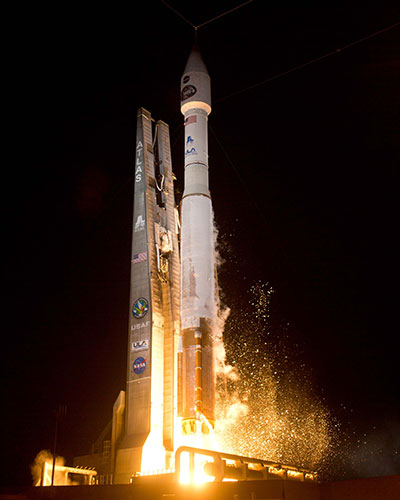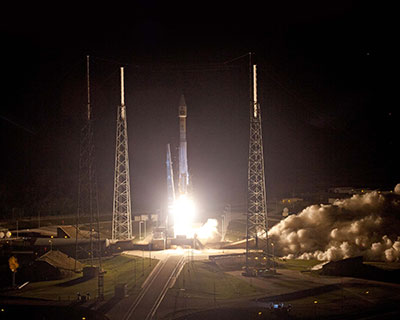 Space News space history and artifacts articles Messages space history discussion forums Sightings worldwide astronaut appearances Resources selected space history documents |
If you have previously registered, but forgotten your password, click here.
"TDRS-K bolsters our network of satellites that provides essential communications to support space exploration," said Badri Younes, deputy associate administrator for Space Communications and Navigation at NASA Headquarters in Washington. "It will improve the overall health and longevity of our system." The TDRS system provides tracking, telemetry, command and high-bandwidth data return services for numerous science and human exploration missions orbiting Earth. These include the International Space Station and NASA's Hubble Space Telescope. "With this launch, NASA has begun the replenishment of our aging space network," said Jeffrey Gramling, TDRS project manager. "This addition to our current fleet of seven will provide even greater capabilities to a network that has become key to enabling many of NASA's scientific discoveries." TDRS-K was lifted into orbit aboard a United Launch Alliance Atlas V rocket from Space Launch Complex-41. After a three-month test phase, NASA will accept the spacecraft for additional evaluation before putting the satellite into service. The TDRS-K spacecraft includes several modifications from older satellites in the TDRS system, including redesigned telecommunications payload electronics and a high-performance solar panel designed for more spacecraft power to meet growing S-band requirements. Another significant design change, the return to ground-based processing of data, will allow the system to service more customers with evolving communication requirements. The next TDRS spacecraft, TDRS-L, is scheduled for launch in 2014. TDRS-M's manufacturing process will be completed in 2015. NASA's Space Communications and Navigation Program, part of the Human Exploration and Operations Mission Directorate at the agency's Headquarters in Washington, is responsible for the space network. The TDRS Project Office at NASA's Goddard Space Flight Center in Greenbelt, Md., manages the TDRS development program. Launch services were provided by United Launch Alliance. NASA's Launch Services Program at the Kennedy Space Center was responsible for acquisition of launch services. | ||||||||
| Robert Pearlman | United Launch Alliance (ULA) release United Launch Alliance Successfully Launches NASA's Tracking and Data Relay Satellite Payload | |||||||
| gnewt | This is a two-minute time exposure of the Atlas V-401 launch vehicle, guiding NASA's latest generation of communications satellite into orbit. Unfortunately I bumped the tripod a bit, but the flare at the top of the arch is when the lift vehicle burned out, or staged, I think. I read that the Tracking and Data Relay Satellite System (TDRS) is the 11th in the line of comm-sats since 1983. The NASA TV news conference yesterday said the original satellites launch back in 1983 has a 'shelf-life' of ten years but that in fact they'd been up there and functioning for 27 years! I made this image from the Kissimmee, FL area, some 64 miles from the Cape.  | |||||||


